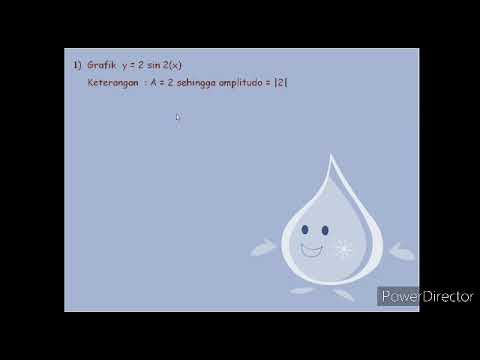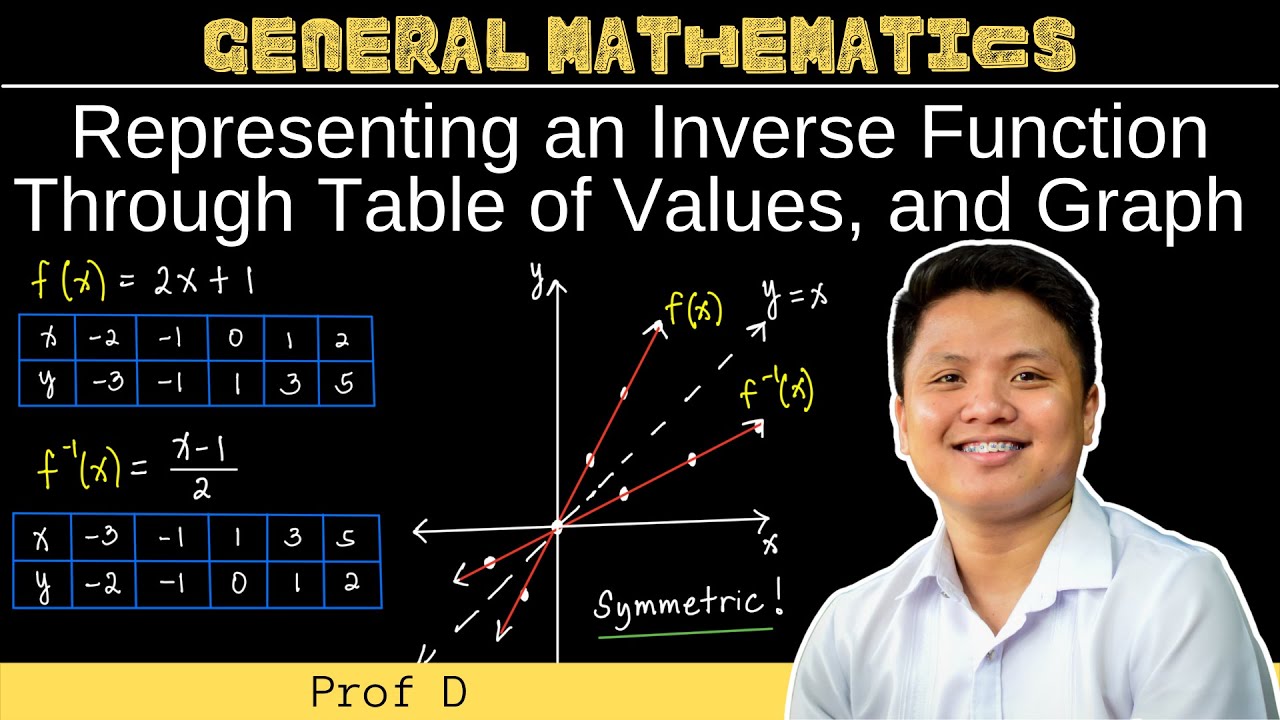RESUMÃO - GRÁFICO DE UMA FUNÇÃO DO PRIMEIRO 1º GRAU
Summary
TLDRIn this video, the instructor provides a quick and easy way to graph a first-degree function, using the example of the function -2x + 5. The key steps include identifying the independent term (5), recognizing the function’s decreasing slope based on the negative angular coefficient, and finding where the function intersects the X-axis by solving for x. With just two points, the graph is complete. The instructor emphasizes how simple it is to plot the graph without a table, offering helpful tips and encouraging viewers to subscribe for more lessons.
Takeaways
- 😀 The script teaches how to quickly graph a first-degree function without the need for a table.
- 😀 The independent term (constant) in the function is 5, which indicates where the line will intersect the Y-axis.
- 😀 When graphing a first-degree function, the line will always be straight (linear).
- 😀 The angular coefficient (slope) of the function determines if the line is increasing or decreasing. A negative slope means the line is decreasing.
- 😀 In this case, the function has a slope of -2, which means the line is decreasing.
- 😀 The intercept on the Y-axis is found by looking at the independent term, which is 5, and plotting it on the Y-axis.
- 😀 To find where the line intersects the X-axis, set the function equal to zero and solve for X.
- 😀 The function -2x + 5 = 0 is solved by isolating X, leading to an X value of 2.5.
- 😀 The point where the line intercepts the X-axis is at X = 2.5, which is between 2 and 3 on the X-axis.
- 😀 With just two points (Y-intercept and X-intercept), you can draw the line and complete the graph for a first-degree function.
- 😀 The video encourages viewers to subscribe to the channel for more lessons and provides links to related content in the description.
Q & A
What is the first step in graphing a first-degree function?
-The first step is to identify the independent term (constant) in the function. In this case, the function is -2x + 5, and the independent term is 5.
What does the independent term in the function represent?
-The independent term represents the Y-intercept, where the graph of the function crosses the Y-axis. In this case, the function intercepts the Y-axis at 5.
How do you know if the graph of the function is increasing or decreasing?
-The graph's slope (angular coefficient) determines if the function is increasing or decreasing. If the angular coefficient is negative, like in -2x, the graph is decreasing. If it's positive, the graph is increasing.
What is the angular coefficient in the function -2x + 5?
-The angular coefficient of the function -2x + 5 is -2.
What does a negative angular coefficient mean for the graph?
-A negative angular coefficient means that the graph is decreasing. The line will slope downwards as you move from left to right.
How do you find the point where the graph intersects the X-axis?
-To find the point where the graph intersects the X-axis, set the function equal to zero and solve for X. For example, -2x + 5 = 0, which simplifies to x = 2.5.
What is the X-coordinate of the point where the graph intersects the X-axis?
-The X-coordinate of the point where the graph intersects the X-axis is 2.5, which can also be written as the fraction 5/2.
Once you have two points, what is the next step in graphing the function?
-Once you have two points, you can plot them on the graph and then draw a straight line connecting the points to complete the graph of the first-degree function.
Why is it not necessary to create a table when graphing a first-degree function?
-It is not necessary to create a table because you can determine the graph's key points directly from the function: the Y-intercept and the X-intercept, which are sufficient to draw the line.
What additional resources are provided for further learning about first-degree functions?
-The video provides a playlist link with all the related classes on first-degree functions and mentions links in the description for more detailed explanations.
Outlines

This section is available to paid users only. Please upgrade to access this part.
Upgrade NowMindmap

This section is available to paid users only. Please upgrade to access this part.
Upgrade NowKeywords

This section is available to paid users only. Please upgrade to access this part.
Upgrade NowHighlights

This section is available to paid users only. Please upgrade to access this part.
Upgrade NowTranscripts

This section is available to paid users only. Please upgrade to access this part.
Upgrade NowBrowse More Related Video

Trig functions grade 11 and 12: Horizontal stretch

Translasi Vertikal Hal 1-13 Bab 1 TRANSFORMASI FUNGSI Kelas 12 SMA SMK Kurikulum Merdeka

Komposisi Translasi (Fungsi Trigonometri)

FUNÇÃO DO 1º GRAU | COMO CONSTRUIR GRÁFICO | RAIZ DA FUNÇÃO

Representing an Inverse Function Through Table of Values, and Graph | General Mathematics

Fungsi Kuadrat [Part 7] - Grafik Fungsi Kuadrat
5.0 / 5 (0 votes)